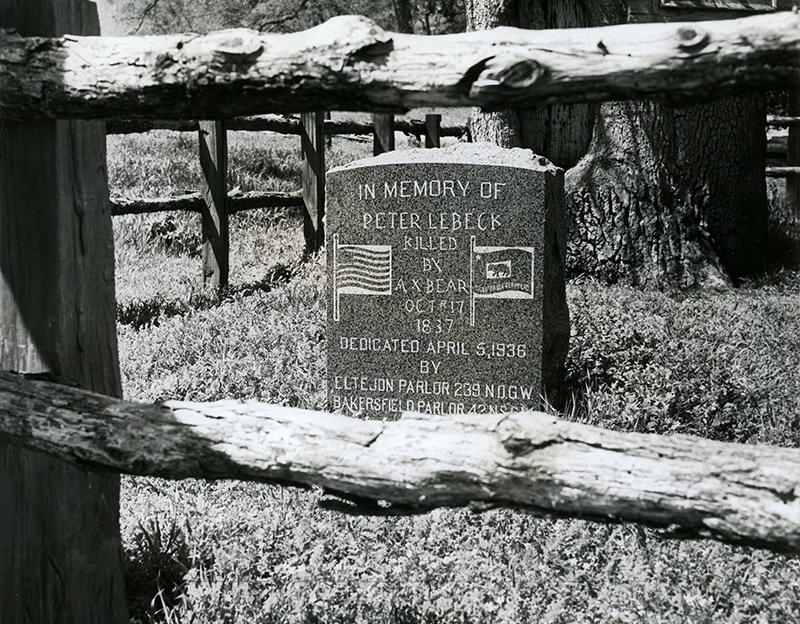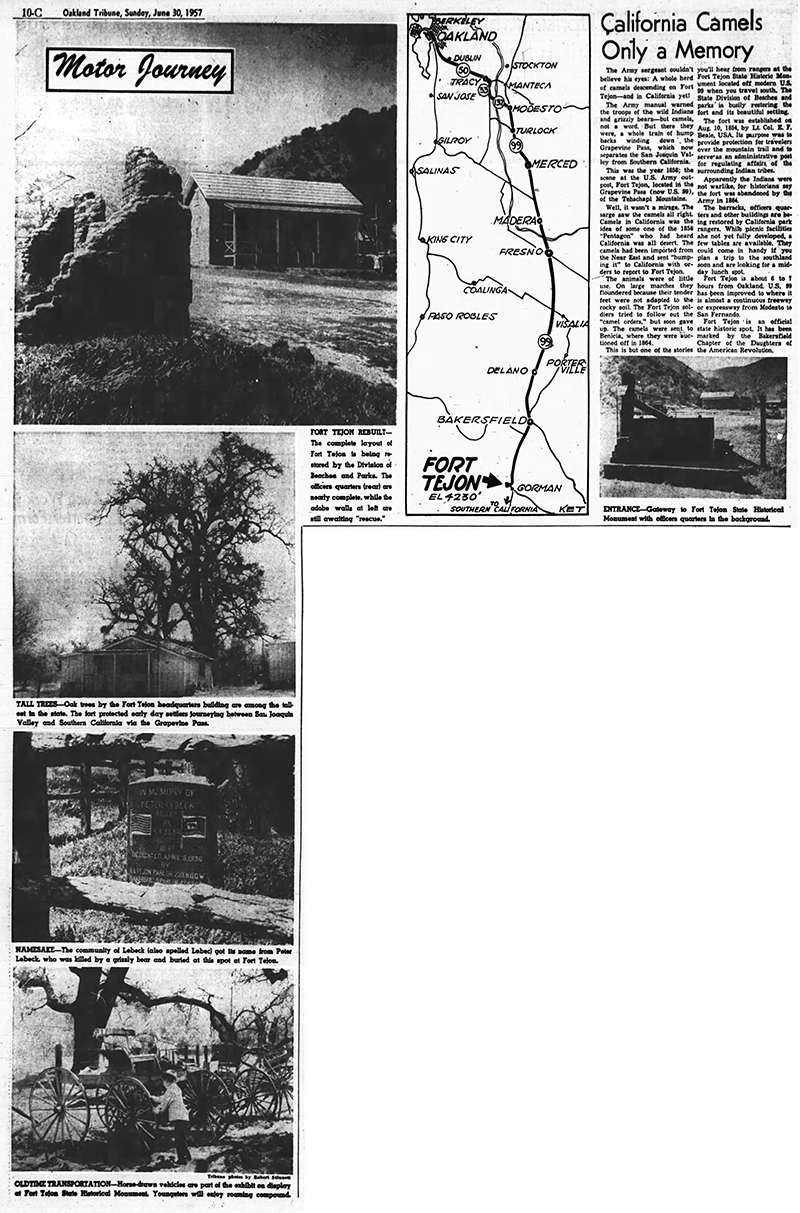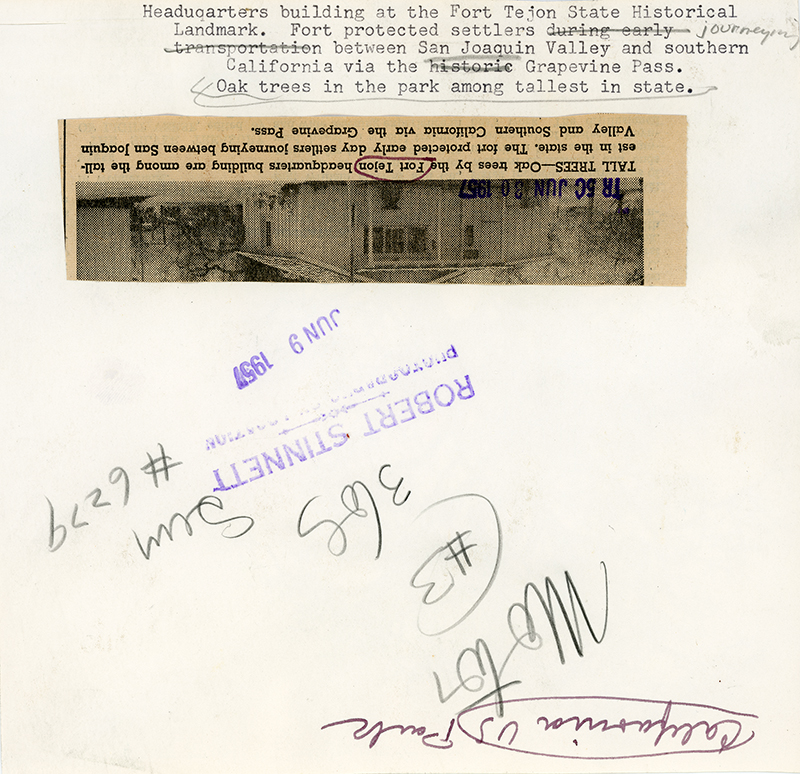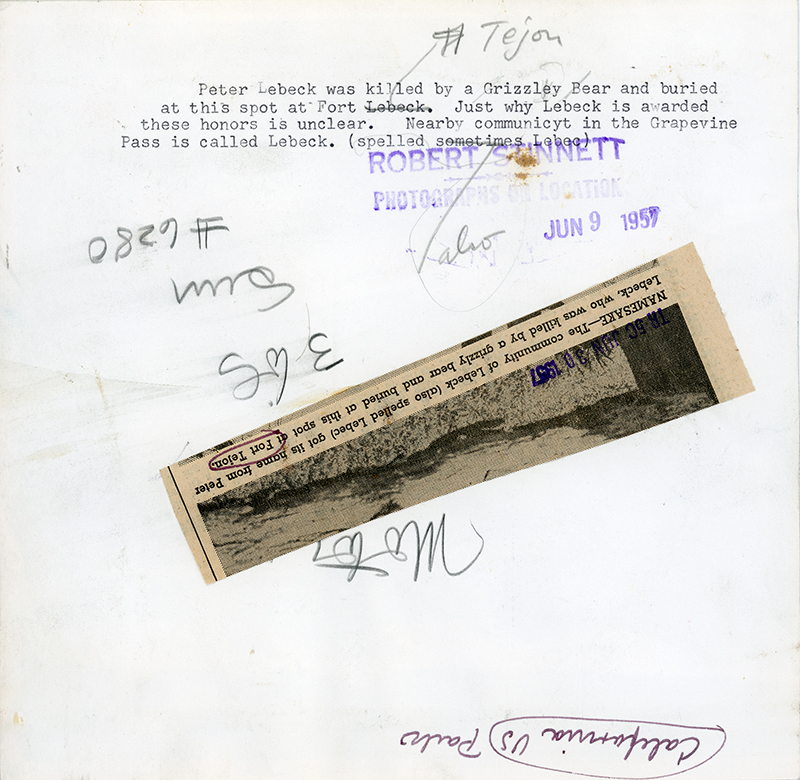Headquarters Building, Peter Lebeck Grave
Fort Tejon on the Ridge Route
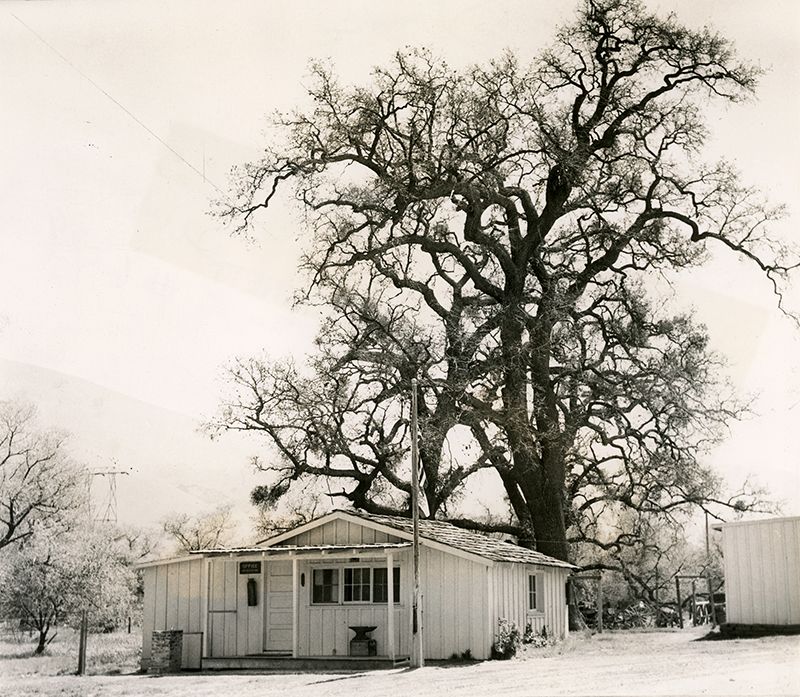
Click image to enlarge
| Download archival scan
June 9, 1957 — These original (approx.) 8x8-inch prints of the Fort Tejon headquarters building (above) and Peter Lebeck's grave marker (below) from the Oakland Tribune archive were two of the five photographs that accompanied a photo feature that was published in the Tribune on June 30, 1957 (below). The feature, which included a story about Gen. E.F. Beale's "Camel Corps," coincided with the restoration of the fort that was being undertaken by the California Division of Beaches and Parks. The fort, established in 1854, had fallen into ruin following its abandonment a decade later. (The Division of Beaches and Parks became the State Department of Parks and Recreation on August 15, 1967, under Gov. Ronald Reagan.) The photographs were made by Tribune staff photographer Robert Stinnett (1924-2018), whose captions on the backs of the photos appear below. (He probably also wrote the story.) Stinnett joined the Tribune staff after serving as a naval photographer in the same aerial photo group as George H.W. Bush during World War II and earning 10 service stars. Most famously, in 1999 Stinnett authored the book, "Day Of Deceit: The Truth About FDR and Pearl Harbor," in which he used documentary evidence to show President Franklin D. Roosevelt not only knew about the planned Japanese attack on Pearl Harbor but also deliberately allowed the attack to occur in order to gain U.S. entry in the war. Although the book gained critical acclaim, it was also harshly criticized, particularly in a 2004 essay by retired Rear Admiral Richard E. Young of the U.S. Navy Reserve who refuted each of Stinnett's principal assertions.
California Camels Only a Memory. The Oakland Tribune | Sunday, June 30, 1957. The Army sergeant couldn't believe his eyes: A whole herd of camels descending on Fort Tejon — and in California yet! The Army manual warned the troops of the wild Indians and grizzly bears — but camels, not a word. But there they were, a whole train of hump barks winding down the Grapevine Pass, which now separates the San Joaquin Valley from Southern California. This was the year 1858; the scene at the U.S. Army outpost, Fort Tejon, located in the Grapevine Pass (now U.S. 99), of the Tehachapi Mountains. Well, it wasn't a mirage. The sarge saw the camels, all right. Camels in California was the idea of some one of the 1858 "Pentagon" who had heard California was all desert. The camels had been imported from the Near East and sent "humping it" to California with orders to report to Fort Tejon. The animals were of little use. On large marches they floundered because their tender feet were not adapted to the rocky soil. The Fort Tejon soldiers tried to follow out the "camel orders" but soon gave up. The camels were sent to Benicia, where they were auctioned off in 1864. This is but one of the stories you'll hear from rangers at the Fort Tejon State Historic Monument located off modern U.S. 99 when you travel south. The State Division of Beaches and parks is busily restoring the fort and its beautiful setting. The fort was established on Aug. 10, 1854, by Lt Col. E.F. Beale, USA. Its purpose was to provide protection for travelers over the mountain trail and to serve as an administrative post for regulating affairs of the surrounding Indian tribes. Apparently, the Indians were not warlike, for historians say the fort was abandoned by the Army in 1864. The barracks, officers' quarters and other buildins are being restored by California park rangers. White picnic facilities are not yet fully developed, a few tables are available. They could come in handy if you plan a trip to the southland soon and are looking for a midday lunch spot. Fort Tejon is about 6 to 7 hours from Oakland. U.S. 99 has been improved to where it is almost a continuous freeway or expressway from Modesto to San Fernando. Fort Tejon is an official state historic spot. It has been marked by the Bakersfield Chapter of the Daughters of the American Revolution.
LW3731: 9600 dpi jpegs from original photographs purchased 2019 by Leon Worden.
|

